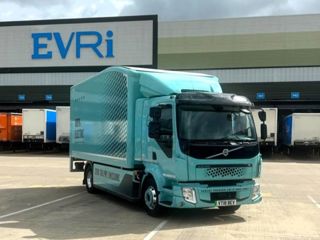By Jonathan Walker, head of cities and infrastructure policy at Logistics UK
In 2018, 1.7 billion people worldwide lived in a city with at least 1 million inhabitants, with Government statistics from 2020 estimating that 82.9% of the UK’s population live in an urban area.
It is projected that in 2030, 28% of people worldwide will be concentrated in cities with a population of at least 1 million, with further government reports noting that England’s urban population is growing at a faster rate than the rural.
As the urban population continues to expand, housing and commercial developments need to be planned and designed in a way to support modern demand and freight patterns.
The less land that is safeguarded near to towns and cities for logistics, the longer freight journeys are – which result in reduced operational efficiency and may deter investment in electric fleets or other zero emission options, which may have shorter ranges than ‘traditional’ fuelling options.
With online shopping accounting for over 26% of all retail sales in 2023, ensuring sufficient logistics land to service residents is vital.
In the past, residential values in London – and other urban areas - have been typically higher than industrial land values and there has been pressure from some developers to convert industrial land for residential use.
Research from Savills – published in June 2022 – indicates that London has lost 5.7 million sq ft of warehouse space to other uses since 2011.
However, the research indicates that industrial land values are now rising, with the average price per acre in certain locations increasing by 175% to £8.3 million since 2017, although this brings additional costs for those looking to develop new logistics sites.
The London Plan is the strategic plan for the city which sets out an economic, environmental, transport and social framework for development, and within this plan is the recommendation that 52,000 new homes should be built per year over the next 10 years.
With research from the British Property Federation suggesting that each additional new home requires 69 sq ft of warehouse space to support it, meeting the recommendation would result in the need for an additional 36 million sq ft of warehousing space to sufficiently support the increase in residents.
This need for increased urban logistics land is not unique to London, demonstrated by the growing urban population across England, and the world.
However, to ensure the safeguarding of such land – and therefore support operational efficiency and decarbonisation targets – planning-reform is essential.
In July 2019, following recommendation from Logistics UK (then FTA), Government updated its guidance to local authorities on overseeing housing and economic needs to include a dedicated section advising councils how to assess the need – and allocate space – for logistics.
While this was an encouraging start, at the time Logistics UK highlighted how it still felt more could be done.
Therefore, in June 2022, Logistics UK broadly welcomed the publication of Government’s Future of Freight plan - the first-ever cross-modal and cross-Government plan for the UK freight transport sector – as a positive step forward for industry.
And, in July 2023, the business group hailed the call for evidence on freight, logistics and the planning system as long awaited and much needed, noting that it should act as a catalyst for long-term planning reforms that recognise the importance of our industry.
Future reforms to planning must consider the changing nature of urban logistics; both recognising that a shift to zero-emission vehicles may require the allocation of land closer to town and city centres, while also ensuring that housing and commercial developments are easily accessible for freight.
Logistics UK believes it is equally important to recognise that improving the flow of freight can bring significant quality of life benefits to urban areas and so must be supported by intelligent planning that discourages unnecessary car use to free up space for vital goods movements.
Designing our towns and cities in a way that supports modern, sustainable logistics – and the continued growth in urban populations - is essential to meet social, economic and environmental needs.



















Login to comment
Comments
No comments have been made yet.